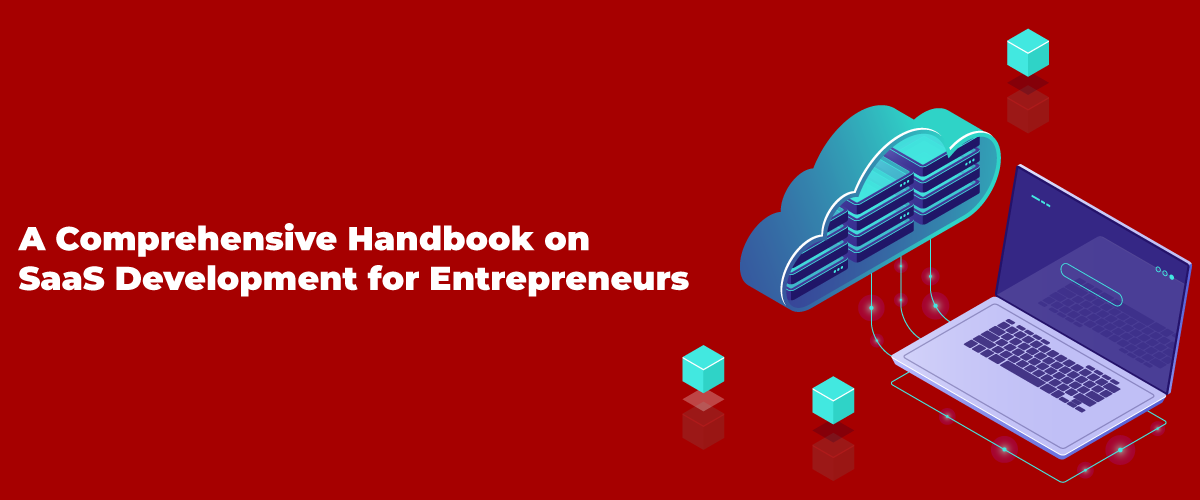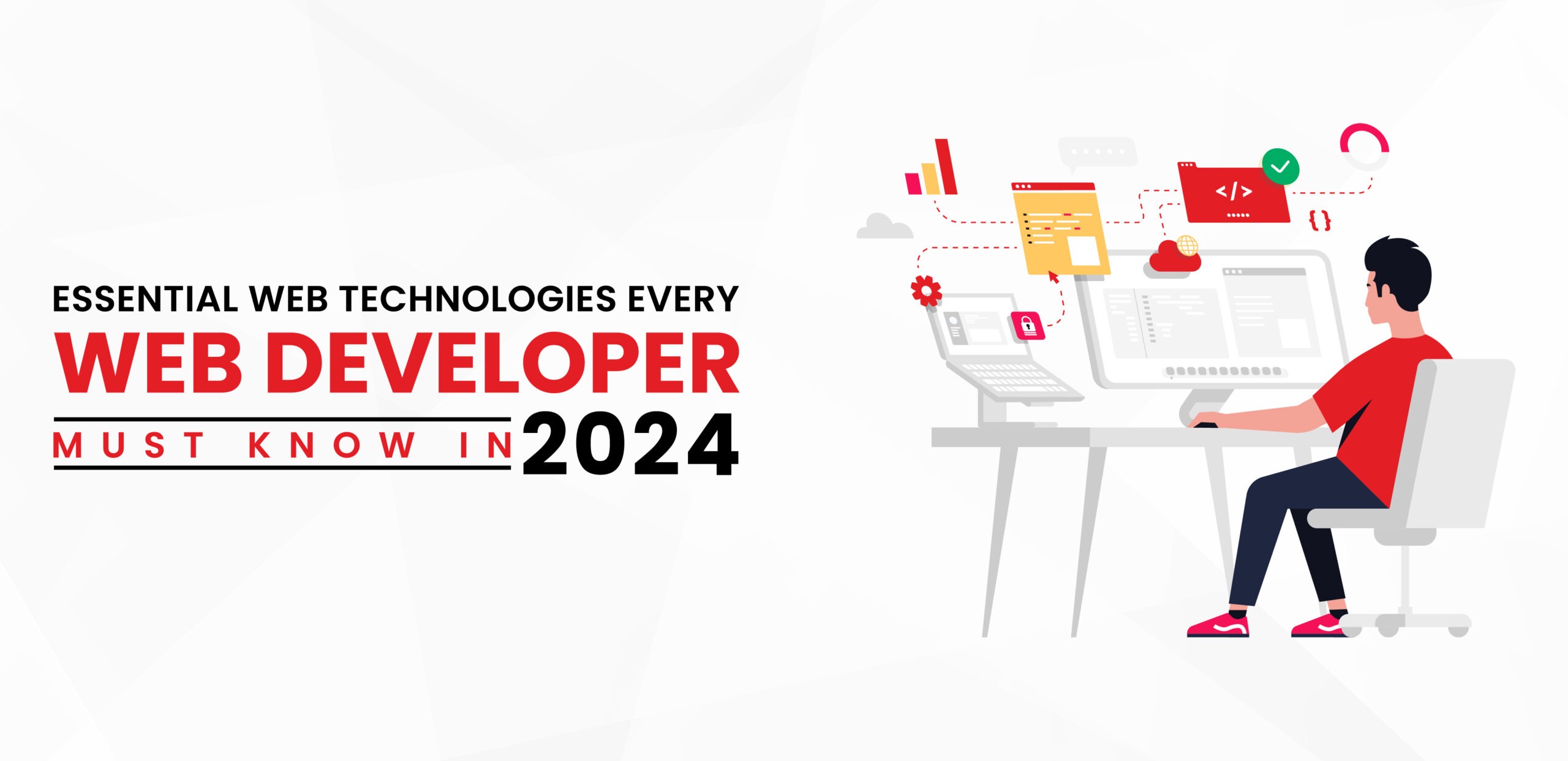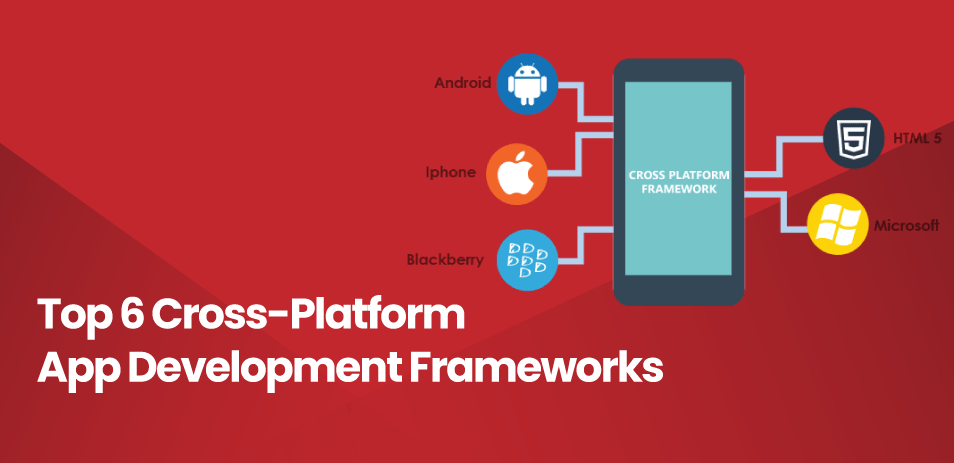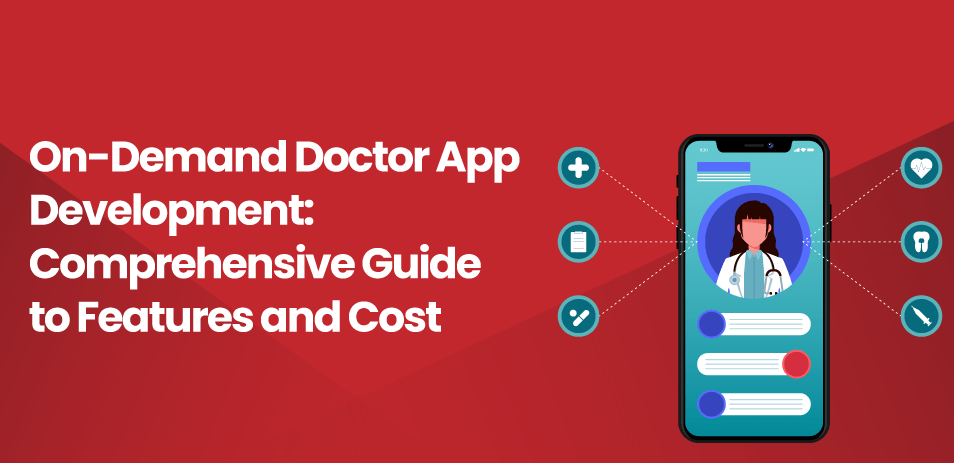Netflix, Spotify, Trello, Buffer, Hubspot, Dropbox – these industry giants share a common thread. They are not just some of the most successful products of the decade but also prime examples of the thriving Software-as-a-Service (SaaS) model. In fact, statistics reveal a resounding shift towards cloud-based solutions. With organizations averaging 130 SaaS apps in 2022 and the Market projected to reach a staggering $232 billion by 2024, the future clearly belongs to SaaS.
This landscape holds immense potential for aspiring entrepreneurs. Yet, aspiring SaaS founders often face a sea of questions: How do we navigate this dynamic Market? What are the key considerations? What steps lead to a successful SaaS build? This article aims to demystify the process, guiding you through the intricacies and nuances of crafting a winning SaaS application.
What is SaaS Development?
SaaS application development, or Software as a Service development, is the process of creating and delivering software applications over the internet on a subscription basis. Instead of installing and maintaining Software on individual computers, users access SaaS applications through a web browser or mobile app. This cloud-based approach offers numerous advantages for both businesses and users.
Here are some key characteristics of SaaS development Platform:
Cloud-based:
SaaS applications are hosted on remote servers by the provider, eliminating the need for users to install or maintain any software on their own devices.
Subscription-based:
Users pay a recurring fee to access a SaaS application, typically on a monthly or annual basis.
Multi-tenant:
A single instance of a SaaS application can be shared by multiple users, which helps to keep costs down for both the provider and the users.
Scalable:
SaaS applications can be easily scaled up or down to meet users’ needs.
Updateable:
SaaS providers are responsible for updating and maintaining the application so users always have access to the latest features and bug fixes.
SaaS development is a rapidly growing market driven by the increasing demand for flexible and affordable software solutions. Some of the most popular SaaS applications include productivity tools like Microsoft Office 365 and G Suite, customer relationship management (CRM) systems like Salesforce, and communication tools like Slack.
| Feature | SaaS | Traditional Software |
|---|---|---|
| Deployment Model | Cloud-based, accessed via a web browser or mobile app | Installed on individual user devices |
| Delivery Model | Subscription-based, pay per month/year | One-time license fee, possible maintenance fees |
| Maintenance and Updates | Provider responsibility, automatic updates | User responsibility and manual updates are required |
| Scalability | Easy to scale up or down based on usage | It can be challenging and expensive to scale |
| Accessibility | Accessible from any device with an internet connection | Limited to installed devices |
| Security | Typically robust security measures implemented by provider | It is up to the user to maintain security |
| Data Storage | Data stored on the provider’s secure servers | Data stored on user devices |
| Initial Cost | Lower upfront cost, ongoing subscription fees | Higher upfront cost, the potential for additional fees |
| Customization | Limited customization options, typically standardized | More flexible customization options, but requires technical expertise |
| Integration | Easier to integrate with other SaaS applications | It can be more difficult to integrate with other systems |
| Total Cost of Ownership (TCO) | Potentially lower TCO over time, especially for smaller organizations | TCO can be higher due to upfront costs and maintenance requirements |
| Examples | Salesforce, Dropbox, Google Workspace | Microsoft Office, Adobe Photoshop, QuickBooks |
Types of SaaS Solutions
There are many different types of SaaS applications serving diverse needs across various industries. Here are some key categories:
1. Business Productivity & Collaboration:
- Customer Relationship Management (CRM): Manage customer interactions, sales pipelines, and marketing campaigns (e.g., Salesforce, HubSpot, Zoho CRM).
- Project Management: Coordinate teams, track tasks, and manage resources (e.g., Asana, Trello, Jira).
- Communication & Collaboration: Facilitate teamwork with tools like video conferencing, instant messaging, and file sharing (e.g., Slack, Microsoft Teams, Zoom).
- Enterprise Resource Planning (ERP): Integrate and manage core business processes like finance, HR, supply chain, and manufacturing (e.g., SAP, Oracle NetSuite, Microsoft Dynamics).
2. Marketing & Sales:
- Email Marketing: Automate email campaigns and track performance (e.g., Mailchimp, Constant Contact, ActiveCampaign).
- Social Media Management: Schedule posts, analyze engagement, and manage multiple accounts (e.g., Hootsuite, Sprout Social, Buffer).
- Content Management Systems (CMS): Create and manage website content easily (e.g., WordPress, Drupal, Wix).
- Web Analytics: Track website traffic, user behavior, and marketing campaign effectiveness (e.g., Google Analytics, Adobe Analytics, HubSpot Marketing Hub).
3. Finance & Accounting:
- Online Accounting: Manage bills, expenses, invoices, and payroll (e.g., QuickBooks Online, Xero, FreshBooks).
- Tax Preparation & Filing: Prepare and file tax returns easily (e.g., TurboTax, H&R Block, TaxAct).
- Payment Processing: Accept online payments securely (e.g., Stripe, PayPal, Square).
- Expense Management: Track and manage employee expenses (e.g., Expensify, Concur, Zoho Expense).
4. Human Resources (HR):
- Applicant Tracking System (ATS): Manage the hiring process, from job postings to onboarding (e.g., Greenhouse, Workday, BambooHR).
- Payroll & Benefits Administration: Automate payroll and manage employee benefits (e.g., ADP, Gusto, Zenefits).
- Performance Management: Set goals, track progress, and provide feedback to employees (e.g., BambooHR, Lattice, 15Five).
- Learning & Development: Provide training and development opportunities for employees (e.g., LinkedIn Learning, Udemy, Coursera).
5. Other Categories:
- Design & Creativity: Graphic design, video editing, photo editing tools (e.g., Canva, Adobe Creative Cloud, InVision).
- Data & Analytics: Business intelligence, data visualization, reporting tools (e.g., Tableau, Power BI, Looker).
- Customer Support: Help desk software, live chat, and ticketing systems (e.g., Zendesk, Freshdesk, Help Scout).
- Security & Compliance: Data encryption, threat detection, and access control (e.g., Okta, Duo Security, Crowdstrike).
Critical Factors to Ponder Prior to SaaS App Development
Successful SaaS development process requires careful consideration and planning. Before diving into development, take some time to ponder these key factors:
1. Delving Deeper into Market & Target Audience: Validating Your SaaS Idea
Launching a successful SaaS application begins with a solid understanding of the Market and your target audience. These two pillars guide every aspect of development, from feature selection to marketing strategies. Let’s explore each element in detail:
Problem Validation: Ensuring You Solve a Real Issue
Before pouring resources into development, ensure your app tackles a genuine problem with enough demand. This requires thorough market research and analysis:
Market Research:
- Identify the overall market size and growth potential for your chosen niche.
- Analyze industry trends and future projections.
- Understand existing solutions and their limitations.
- Research emerging technologies and their impact on your Market.
Competitive Landscape:
- Identify your direct and indirect competitors.
- Analyze their strengths, weaknesses, and unique selling propositions (USPs).
- Evaluate their market share and customer base.
- Explore opportunities to differentiate your app and offer unique value.
User Feedback:
- Conduct surveys, interviews, and focus groups with potential users.
- Gauge their pain points and frustrations with existing solutions.
- Understand their needs, preferences, and willingness to pay for your app.
- Validate your concept and refine your features based on user insights.
Target Audience: Sharpening Your Focus
Understanding your ideal users is crucial for tailoring your app, messaging, and marketing efforts. Define your target audience by considering the following:
- Demographics: Age, gender, education, income, location, etc.
- Needs & Pain Points: Specific problems your app will solve for them.
- Technical Skills & Preferences: Ease of use, preferred platforms, etc.
- Decision-Making Process: Who influences their purchase decisions?
- Budget & Pricing Sensitivity: Willingness to pay and preferred pricing models.
By creating detailed buyer personas, you can gain a clear picture of your ideal customer. This clarity guides:
- Development Priorities: Focus on features that address target audience needs.
- User Interface & Experience (UI/UX) Design: Create an interface that resonates with their preferences and technical skills.
- Marketing & Sales Strategies: Target them through relevant channels with messaging that addresses their pain points and showcases your app’s value proposition.
2. Product Viability & Features:
Once you’ve validated your Market and honed your target audience, the next step is building a viable product with attractive features. Let’s dive deeper into three critical elements:
1. Value Proposition: Standing Out in the Crowd
In a crowded digital marketplace, your SaaS app needs a clear and compelling value proposition. This is your “why,” the unique reason users should choose you over the competition. Articulate your value proposition by answering these questions:
- What problems do you solve for your target audience?
- How does your app do it better than others?
- What are the tangible benefits and unique insights you offer?
- What emotional connection do you create with your users?
Craft a concise and powerful statement that encapsulates your value proposition. This statement should be the backbone of your marketing and development efforts, ensuring every aspect of your app aligns with its core benefit.
2. Minimum Viable Product (MVP): Starting Lean and Agile
Don’t aim for a fully-fledged behemoth on day one. Instead, focus on building a Minimum Viable Product (MVP). This is the leanest version of your app that delivers essential value and gathers user feedback. Your MVP should:
- Solve the core problem identified in your market research.
- Offer enough features to demonstrate the potential of your app.
- Be simple and easy to use for initial user testing.
- Provide data collection mechanisms to capture user feedback and usage patterns.
By launching an MVP, you can quickly validate your concept, learn from user interactions, and iterate your app based on real-world feedback. This agile approach minimizes development costs and increases your chances of building a product that truly resonates with your target audience.
3. Scalability & Security: Building for the Future
With success in mind, it’s crucial to anticipate growth and plan accordingly. Scalability and security should be woven into the fabric of your app from the very beginning. Consider these aspects:
- Scalability: Choose technologies and infrastructure that can handle increasing user numbers and data demands without performance degradation.
- Data Security: Implement robust security measures to protect user data from unauthorized access, breaches, and potential vulnerabilities.
- System Performance: Optimize your app for performance and efficiency to avoid lags and crashes under heavy usage.
- Future-proofing: Stay updated on technological advancements and consider future integrations and feature expansions to maintain your competitive edge.
By prioritizing scalability and security from the onset, you build a future-proof SaaS app that can adapt and grow alongside your user base. This proactive approach fosters trust with your users and lays the foundation for sustainable success.
4. Technical Considerations:
The technical decisions you make during development lay the groundwork for your SaaS app’s future success. Let’s delve into three key areas to ensure you build a solid and scalable foundation:
Technology Stack: Choosing the Right Tools for the Job
Your tech stack encompasses the programming languages, frameworks, and databases that power your app. Choosing the right ones is crucial for:
- Scalability: Opt for languages and frameworks known for their ability to handle growing user numbers and data demands.
- Developer Availability: Consider the availability of experienced developers familiar with your chosen stack.
- Security: Select secure technologies with robust built-in security features.
- Functionality: Match the tech stack to your app’s specific features and requirements.
Popular choices for SaaS application development include:
- Programming Languages: Python, Java, JavaScript (Node.js)
- Frameworks: Django, Spring Boot, React
- Databases: PostgreSQL, MySQL, MongoDB
Conduct thorough research, evaluate your needs, and seek expert advice to determine the ideal tech stack for your specific app.
API Integrations: Leverage Existing Solutions
Don’t reinvent the wheel! APIs (Application Programming Interfaces) offer pre-built functionalities you can integrate into your app, saving time and resources. Consider leveraging APIs for:
- Payment Processing: Integrate with secure payment gateways like Stripe or PayPal.
- Social Media: Add sign-in options and social sharing capabilities using APIs from platforms like Facebook and Twitter.
- Third-Party Tools: Enhance your app with features like email marketing, data analytics, or customer support through dedicated APIs.
Choose reliable API providers with robust documentation and support, ensuring seamless integration and smooth operation.
Deployment & Hosting: Finding Your Cloud Home
Select the right cloud hosting platform for your SaaS app, considering:
- Security: Choose a platform with strong security measures and compliance certifications.
- Scalability: Opt for a provider that can accommodate your growth with flexible scaling options.
- Cost-effectiveness: Analyze pricing models and consider pay-as-you-go options to avoid overspending.
- Performance: Choose a platform known for its reliability and uptime to ensure smooth performance for your users.
Popular cloud hosting options for SaaS applications include:
- Amazon Web Services (AWS)
- Microsoft Azure
- Google Cloud Platform (GCP)

Evaluate your needs, budget, and desired features to find the cloud hosting platform that best suits your SaaS app.
Remember, technical considerations are not one-time decisions. Continuously monitor your app’s performance, stay updated on emerging technologies, and be prepared to adapt and evolve your tech stack as your app matures. By making informed choices and investing in robust technologies, you’ll build a SaaS app that stands the test of time and scales alongside your growing user base.
Business & Financial Planning:
Turning your innovative SaaS idea into a thriving business requires solid planning beyond just technology. Business and financial considerations are the pillars that ensure your app is not only well-built but also commercially viable and reaches its target audience. Let’s unpack three key elements:
1. Pricing Model: Finding the Sweet Spot
Choosing the right pricing model is crucial for both revenue generation and user satisfaction. Consider these popular options:
- Subscription-based: Recurring monthly or annual fees offer predictable revenue and encourage user retention.
- Freemium: Provide a basic version for free with premium features requiring paid subscriptions. It is ideal for attracting a large user base and upselling premium features.
- Pay-per-use: Users pay only for the features they use, offering flexibility but potentially lower monthly revenue.
Pricing Model Examples: Finding the Sweet Spot
| Target Audience | App Features | Potential Pricing Models | Pros & Cons |
| Small businesses | Project management with basic task tracking & collaboration | Subscription: $10/month per user | Predictable revenue encourages user retention, easy to understand |
| Freelancers & individual professionals | Design tools with advanced editing and branding features | Freemium: Free basic plan with limited features, Pro plan at $29/month | Large user base, upsell premium features, freemium attracts initial interest |
| Large enterprises | Data analytics platform with custom dashboards and automated reports | Pay-per-use: Flexible usage-based pricing with tiered data storage & processing costs | Cost-effective for low-usage customers, scales easily with increased demand |
| Educational institutions | Collaborative learning platform with real-time feedback and group projects | Hybrid: Paid annual subscription for institutions with additional premium features | The combination of predictable income & optional add-ons caters to budget constraints |
Analyze your target audience, competitor pricing, and app features to determine the model that resonates best. Remember, your pricing should cover development costs operational expenses, and leave room for profit.
2. Marketing & Sales Strategy: Reaching the Right People
With a pricing model in place, it’s time to craft a robust marketing and sales strategy that drives user acquisition. Leverage:
- Content marketing: Create valuable blog posts, videos, and social media content showcasing your app’s benefits and attracting your target audience.
- Social media advertising: Target your ideal users through paid campaigns on platforms like Facebook, LinkedIn, and Twitter.
- Search Engine Optimization (SEO): Optimize your website and app content to rank higher in search results, increasing organic traffic.
- Partnerships and referrals: Collaborate with complementary businesses and incentivize existing users to refer new customers.
3. Financial Forecasts & Funding: Securing Your Path
Before launching, create realistic financial projections to understand your app’s potential profitability and attract funding if needed. Consider:
- Development costs: Analyze projected expenses for building and maintaining your app.
- Operational expenses: Account for server costs, marketing expenses, and ongoing employee salaries.
- Revenue streams: Forecast income based on your chosen pricing model and estimated user base growth.
- Break-even point: Determine the number of users needed to cover your costs and become profitable.
With clear financial projections, you can secure funding from investors, secure loans, or demonstrate your app’s viability to potential partners. This data-driven approach instills confidence and paves the way for financial success.
1. Ongoing Development & Support:
Launching your SaaS app is just the beginning of the adventure. To thrive in the competitive marketplace, ongoing development, and efficient customer support are crucial components. Let’s explore these two key aspects:
1. Iterative Development: Embracing Continuous Improvement
Your SaaS app shouldn’t stand still. Commit to continuous improvement based on user feedback and data analysis. This is where iterative development methodologies come into play:
- Agile Principles: Break down development into smaller, iterative cycles, releasing updates and features frequently.
- User Feedback: Actively solicit and analyze user feedback through surveys, interviews, and in-app tools.
- Data-driven Decisions: Utilize user data and usage analytics to identify areas for improvement and prioritize feature development.
- Experimentation & A/B Testing: Test different functionalities and design variations to see what resonates best with your audience.
By embracing an iterative approach, you ensure your app evolves alongside your users’ needs and market trends. This keeps your offering fresh and competitive and, ultimately, retains user satisfaction.
2. Customer Support: Building Trusted Relationships
Providing responsive and efficient customer support is vital for keeping your users happy and loyal. Invest in building a robust support system that addresses concerns promptly and effectively:
- Multiple Channels: Offer diverse support channels like live chat, email ticketing, phone support, and a comprehensive knowledge base.
- Proactive Engagement: Anticipate potential issues and address them proactively through FAQs, tutorials, and helpful guides.
- Personalization: Treat each user uniquely and understand their specific needs and challenges.
- Quick Resolution: Prioritize timely resolution of issues to minimize user frustration and maintain positive interactions.
Building a dedicated and skilled support team, leveraging automation tools, and fostering a culture of responsiveness contribute significantly to building trust and loyalty with your users. Remember, strong customer support is not just a cost but an investment in the long-term success of your SaaS app.
Ongoing development and support are the engines that propel your SaaS app forward. By embracing an iterative approach to development and prioritizing exceptional customer support, you can ensure your app continuously improves, meets your users’ needs, and becomes a trusted companion in their daily lives. This commitment to quality, responsiveness, and user-centricity will ultimately lay the foundation for a thriving and sustainable SaaS journey.
Delving into the Specifics of SaaS Platform Development
Building a successful SaaS platform requires more than just technical expertise. It demands a nuanced understanding of the unique challenges and opportunities that come with developing Software delivered as a service. Let’s dive into some key specifics that differentiate SaaS platform development from traditional software development:
1. Multi-tenancy vs. Single-tenancy:
Multi-tenancy: Your platform serves multiple clients using a single codebase, with data isolated for each tenant. This offers better scalability and cost-effectiveness but requires robust data security and segregation mechanisms.
Single-tenancy: Each client gets a dedicated instance of the platform, offering greater customization and control but with higher development and maintenance costs.
2. Scalability and Elasticity:
SaaS platforms need to handle fluctuating user numbers and data demands seamlessly. Choose technologies and architectures that can scale up and down easily without compromising performance or reliability.
3. Security and Compliance:
User data in your platform is a precious asset. Implement robust security measures to protect against data breaches, unauthorized access, and potential vulnerabilities. Consider industry-specific compliance requirements like HIPAA or GDPR.
4. Developer Experience (DX) and User Interface (UI):
Building a platform used by developers requires attention to both the internal developer experience (DX) and the user interface (UI) for external users. Focus on clear APIs, robust documentation, and user-friendly interfaces to foster collaboration and enhance overall platform usability.
5. Monitoring and Analytics:
Constantly monitor your platform’s performance, resource utilization, and user behavior. Leverage analytics tools to identify bottlenecks, track key metrics, and make data-driven decisions for continuous improvement.
6. Integration and Extensibility:
Open APIs and well-documented integration points allow third-party developers and users to extend the functionality of your platform, building a vibrant ecosystem and enhancing its value proposition.
7. Automated Provisioning and Management:
Streamline user onboarding and platform management with automated processes for resource provisioning, configuration, and updates. This reduces manual effort and ensures scalability while improving user experience.
8. Subscription and Billing Management:
Implement a secure and flexible subscription management system to handle diverse pricing models, payment processing, and recurring billing cycles.
9. Continuous Integration and Continuous Delivery (CI/CD):
Utilize CI/CD pipelines to automate code merging, testing, and deployment, allowing for faster development cycles and quicker bug fixes.
Unveiling the SaaS Journey: From Idea to a Thriving Solution
Building a successful SaaS solution isn’t a linear sprint; it’s a well-orchestrated journey with distinct stages, each laying the foundation for the next. Let’s dive into these crucial steps, unraveling their purpose and guiding you through the transformation of your innovative idea into a thriving SaaS offering:
1. Discovery & Planning: Charting the Course
Before embarking on the development voyage, you need a clear map. This stage is about finding your “North Star” through:
- Ideation & Validation: Identifying a genuine problem that resonates with a sizeable market. Imagine if there is a burning need your solution can quench. Conducting thorough market research, analyzing competitors, and gathering user feedback ensures you’re not sailing into uncharted waters.
- Target Audience Definition: Who are you building this ship for? Define your ideal users, their pain points, and their preferred features. Think of them as your loyal crew, guiding your design and marketing efforts.
- Product Vision & Roadmapping: Now, plot your course with a clear vision for your SaaS solution. This roadmap outlines your feature priorities, release timelines, and development milestones, ensuring smooth sailing toward your ultimate destination.
2. Design & Prototype: Shaping the User Experience
With the course charted, it’s time to craft the vessel itself. This stage focuses on the user experience:
- UI & UX Design: Imagine a user-friendly interface, your ship’s helm. UI and UX design create an intuitive and visually appealing experience that resonates with your target audience. Consider usability testing and feedback like wind in your sails, propelling you towards excellence.
- Technical Architecture & Prototype Development: Now, build the ship’s sturdy hull. Choose appropriate technologies and frameworks, considering scalability, security, and future integrations. Develop a functional prototype, your test vessel, to validate core functionalities and gather further user feedback before setting sail.
3. Development & Testing: Ensuring Smooth Sailing
With the ship designed and built, it’s time to set sail under a rigorous testing regime:
- Agile Development: Navigate the ever-changing tides of user needs with an agile approach. Release features in iterative cycles, gather feedback and adapt your course quickly. Think of it as adjusting your sails to catch the wind of user needs.
- Automated Testing: Leave no stone unturned! Implement automated testing frameworks to meticulously check your code’s quality, functionality, and performance throughout the voyage.
- Security & Compliance: Ensure a safe and secure journey for your users’ data. Integrate robust security measures and comply with relevant regulations, acting as an impenetrable fortress against potential threats.
4. Deployment & Launch: Setting Sail into the Market
The time has come! Your ship is prepped, and it’s time to launch it into the vast ocean of the Market:
- Infrastructure & Hosting: Choose a reliable cloud hosting platform, your dependable harbor. It should handle anticipated user traffic and data demands, ensuring smooth sailing even in rough seas.
- Pre-Launch Marketing & Branding: Build anticipation and attract early adopters. Think of it as raising your sails and catching the wind of excitement through content marketing, social media campaigns, and a clear value proposition.
- Soft Launch & Feedback: Before making a grand entrance, consider a soft launch to a limited audience. This final test run allows you to gather valuable feedback and refine your ship before full-scale deployment.
5. Ongoing Operations & Support: Navigating the Open Seas
Your journey doesn’t end at launch; it’s just the beginning! Continuous operation and support are the winds that keep your sails full:
- Monitoring & Analytics: Keep your finger on the pulse of your ship’s performance. Monitor metrics, user behavior, and feedback to identify areas for improvement and make data-driven decisions, adjusting your course based on the ocean’s currents.
- Post-Launch Marketing & User Acquisition: Spread your sails wide! Maintain marketing efforts to attract new users and expand your crew. Remember, the open seas of the market reward constant exploration.
- Customer Support & User Engagement: Treat your users like treasured passengers. Provide responsive and efficient support to address their concerns and foster loyalty. Think of it as building strong relationships that weather any storm.
- Iterative Development & Feature Upgrades: Your journey is never truly over. Continue development based on user feedback and market trends. Release regular updates and new features, adding fresh sails and exciting ports of call to your voyage.
Key Variables to Consider Before SaaS Cost Development
Key Cost Variables:
- Features & Functionality: The complexity and number of features directly impact development time and cost. Simpler apps naturally cost less than those with intricate functionalities.
- Technology Stack: Different programming languages, frameworks, and databases come with varying price tags. Choosing open-source options can lead to cost savings.
- Team Location & Rates: Development team location plays a significant role. Rates for developers can vary dramatically between regions, with offshore development often being more cost-effective.
- Design & User Interface (UI/UX): Creating a user-friendly and visually appealing interface often requires additional expertise, influencing the overall cost.
- Third-Party Integrations: Integrating with existing platforms and APIs can introduce additional costs depending on the specific services chosen.
- Security & Compliance: Implementing robust security measures and adhering to industry regulations can add to the development budget.
SaaS Development Cost Breakdown by Phase:
| Phase | Description | Estimated Cost Range | Factors Influencing Cost |
| Discovery & Planning | Market research, user analysis, product vision, and roadmap creation. | $5,000 – $20,000 | Complexity of research, level of competition, and desired detail of roadmap. |
| UI/UX Design | Prototype development, wireframing, user interface design, and usability testing. | $3,000 – $15,000 | App complexity, number of screens, and level of design detail. |
| Front-End Development | Building the user-facing side of the app using web technologies like HTML, CSS, and JavaScript. | $10,000 – $50,000 | App complexity, chosen technology stack, and required integrations. |
| Back-End Development | Building the server-side logic and database for the app, handling data processing and security. | $15,000 – $100,000 | App complexity, database size, chosen technology stack, and API integrations. |
| Testing & Quality Assurance | Ensuring app functionality, performance, and security through automated and manual testing. | $5,000 – $30,000 | App complexity, required testing types, and desired level of coverage. |
| Deployment & Launch | Setting up hosting infrastructure, marketing campaign, and initial user onboarding. | $5,000 – $20,000 | Hosting platform choice, marketing budget, and desired launch scale. |
SaaS App Development Cost by Geographical Region
| Region | Average Hourly Rate | Key Advantages | Key Disadvantages |
| Western Europe (France, Germany, UK, Sweden) | $26–$44 | High level of technical expertise, strong project management skills, proven track record | Higher overall cost compared to other regions, potential communication challenges |
| Eastern Europe (Ukraine, Poland, Hungary, Czech Republic) | $19–$38 | Good technical skills, cost-effective compared to Western Europe, often strong communication in English | Potential lower experience and project management expertise compared to top-tier companies |
| South America (Argentina, Brazil, Chile, Colombia) | $10–$30 | Competitive rates, often flexible and eager to work, improving English communication skills | Potentially lower technical expertise compared to other regions, potential time zones, and cultural differences |
| Asia (Philippines, India, Japan, China) | $12–$23 | Very cost-effective, large talent pool, some companies with excellent technical expertise | Language and cultural barriers, potential intellectual property concerns, time zone differences |
SaaS Development Cost by Team Type:
| Team Type | Estimated Cost Range | Pros | Cons |
| In-house Team (US): | $140,000 – $300,000+ | • Full control over the development process & IP • Greater flexibility & responsiveness | • Highest cost due to salaries & benefits • Requires hiring & managing talent |
| Local Development Company (US): | $80,000 – $200,000 | • Familiarity with local Market & regulations • Easier communication & collaboration | • Potentially higher cost than offshore options • Less access to specialized skill |
| Freelancers: | $30,000 – $100,000 | • Cost-effective option for small apps & MVPs • Access to specialized skills & expertise | • Less control over project management & timelines • Potential communication & quality challenges |
| Outsource Agency: | $50,000 – $150,000 | • Scalable team with diverse skillsets • Competitive rates & efficient project management | • Less control over development process & IP • Potential cultural & communication barriers |
Notes:
- These are estimated ranges, and actual costs may vary depending on your specific app requirements, features, and desired timeline.
- Consider factors like team size, experience, location, and hourly rates when comparing costs.
- The choice of team type depends on your budget, project complexity, desired control, and risk tolerance.
Some Of The Hurdles You Might Encounter During Saas Development
The exciting world of SaaS app development platform comes with its share of challenges, demanding a blend of technical prowess and strategic savvy. Here’s a closer look at some of the hurdles you might encounter:
1. Multi-tenancy Complexity:
- Data Segregation & Security: Ensuring watertight data isolation for every tenant while maintaining consistent performance poses a unique challenge. Robust security measures and meticulous architecture are crucial.
- Scalability & Elasticity: Handling fluctuating user numbers and resource demands without compromising performance or incurring high costs requires a well-planned infrastructure and adaptable technologies.
2. Development & Maintenance:
- Continuous Improvement: Keeping your app fresh and competitive requires ongoing development and feature updates. Balancing new features with ongoing maintenance and bug fixes can be tricky.
- Agile Development & Testing: Implementing agile methodologies to release updates quickly while maintaining quality and stability demands efficient code management and comprehensive testing practices.
3. Security & Compliance:
- Data Protection & Privacy: Protecting user data from breaches and unauthorized access is paramount. Building a secure codebase, adhering to industry regulations, and implementing robust security measures are essential.
- Compliance with Evolving Regulations: Navigating the ever-changing legal landscape and ensuring compliance with industry-specific regulations (e.g., HIPAA, GDPR) presents an ongoing challenge.
4. User Acquisition & Retention:
- Standing Out in a Crowded Market: Attracting users and differentiating your app from the competition requires effective marketing strategies and a compelling value proposition.
- User Retention & Churn: Keeping users engaged and preventing churn necessitates continuous innovation, responsive customer support, and personalization efforts.
5. Technology & Integration:
- Choosing the Right Tech Stack: Selecting the appropriate technologies and frameworks for your app’s specific needs and future scalability can be complex, with consequences for performance and development efforts.
- Third-Party Integrations: Seamless integration with external platforms and APIs can enhance functionality but introduces additional complexity and potential compatibility issues.
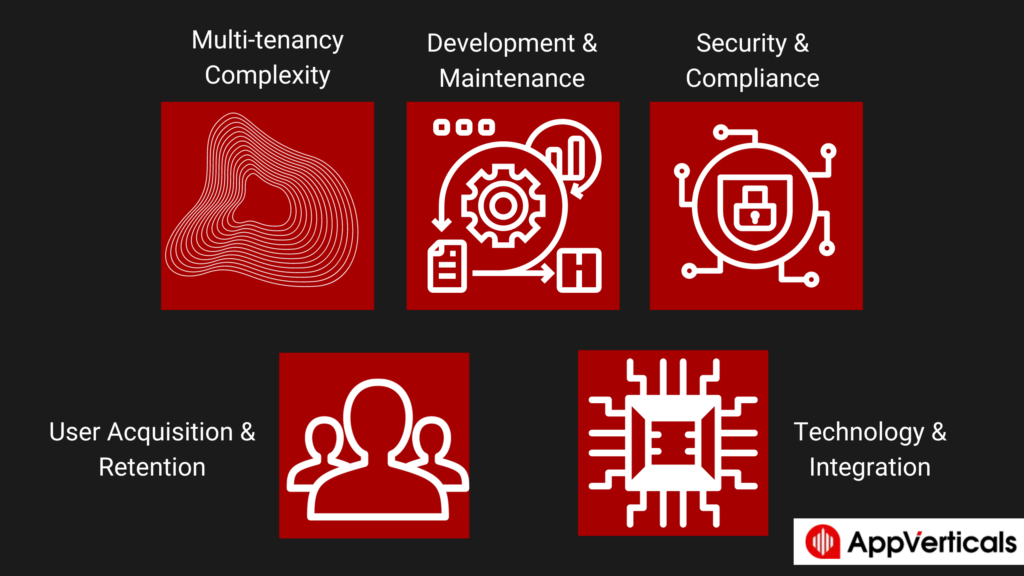
Future Trends: Where will the SaaS Storm Take Us?
The world of SaaS is a dynamic ecosystem, constantly evolving and adapting to new technologies and market demands. As we gaze into the crystal ball of the future, three intriguing trends emerge, promising to reshape the landscape of SaaS development:
1. Emerging Technologies: AI, Blockchain, and Beyond
- AI-powered SaaS: Imagine intelligent assistants managing customer support, dynamically adjusting pricing models, and even building custom features based on user behavior. Artificial intelligence is poised to revolutionize the way we interact with SaaS platforms, offering hyper-personalized experiences and predictive insights for both users and businesses.
- Blockchain for secure and transparent data: The inherent security and transparency of blockchain technology can be harnessed to create tamper-proof data platforms and track complex workflows. This opens doors for innovative SaaS solutions in areas like finance, healthcare, and supply chain management.
- The Internet of Things (IoT) and edge computing: As the number of connected devices explodes, SaaS platforms will need to adapt to manage and analyze data generated at the edge. Decentralized computing solutions and real-time data processing will become critical for handling this influx of information efficiently.
2. Verticalization & Market Trends: Tailoring Solutions to Specific Needs
The “one-size-fits-all” approach is fading in the SaaS world. The future lies in vertical SaaS, catering to the unique needs and challenges of specific industries. Imagine specialized platforms for healthcare providers, legal firms, or construction companies, maximizing efficiency and optimizing workflows for their targeted user base.
This trend also brings opportunities for niche players. By understanding the specific pain points and opportunities within a particular industry, developers can create highly differentiated SaaS solutions that capture a loyal user base within that vertical.
3. Sustainable Growth & Long-Term Vision: Playing the Long Game
As the Market matures, customer lifetime value (CLTV) becomes the new north star for SaaS businesses. Metrics like user retention, engagement, and upsell potential take center stage, informing product roadmaps and driving sustainable growth strategies.
Here are some key practices for long-term success:
- Building a loyal community: Fostering user engagement through forums, knowledge bases, and feedback channels not only creates brand advocates but also provides valuable insights for continuous improvement.
- Data-driven decision–making: Track key metrics like churn rate, user acquisition costs, and customer satisfaction to identify areas for improvement and optimize your business model.
- Agile development and adaptation: Stay ahead of the curve by embracing agile methodologies and continuously adapting your product to emerging technologies and market trends.
Ready to unleash the power of SaaS for your business?
At AppVerticals, we don’t just build SaaS; we craft digital solutions that empower businesses across diverse industries. Leveraging AppVerticals extensive expertise in building high-performing SaaS platforms, we deliver tailored solutions that address your specific needs and propel you ahead of the curve.
From banking and finance to real estate, media and entertainment, and education, our experienced team of professionals has proven successful in creating cutting-edge SaaS solutions for a wide range of verticals. We boast a deep understanding of industry trends, challenges, and regulatory landscapes, ensuring your SaaS platform is not only functional but also strategic.
Contact AppVerticals saas software development company today and let our proficient team craft a standout solution that elevates your digital landscape. We’re committed to helping you achieve your business goals and unlock the full potential of your data and technology.

